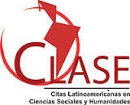In the Production of Life: The Walking and Stopping of the Nukak
DOI:
https://doi.org/10.5433/2176-6665.2022v27n2e43903Keywords:
Nukak, nature, culture, transformation, environment, landscapeAbstract
The result of a work of biographical nature, this article is the result of a research carried out for the conclusion of a Master's Degree. The present work aims to discuss the ways of inhabiting the Nukak forests. Inhabitants of the Colombian Amazon, in the interfluve of the Middle Guaviare and the Upper Inírida, their mother tongue belongs to the Makú-puinave linguistic group. In particular, addressing this issue through two thematic axes: planting - food production and disposal - vegetative generation. We realized that through daily practices and disposal activities and constant mobilizations, the Nukak promote a transformation of the landscape in which they live. Furthermore, we discuss in the following lines how a dwelling model that prioritizes movement can act as a catalyst for changes in the environment. Finally, we discuss how mobility is a possible form of interaction that involves inhabiting and transforming the forest, in the case of the studied group.Downloads
References
BALÉE, William. Footprints of the forest. New York: Columbia University Press, 1994.
BINFORD, Lewis R. The archaeology of place. Journal of Anthropological Archaeology, London, v. 1, n. 1, p. 5-31, 1981.
CABRERA BECERRA, Gabriel; CALVO, Carlos Franky; MAHECHA, Dany. Los nukak: nómadas de la Amazonía colombiana. Santafé de Bogotá: Universidad Nacional de Colombia, Fundación Gaia Amazonas, 1999.
CLEMENT, Charles R. 1492 and the loss of Amazonian crop genetic resources. I. The relation between domestication and human population decline. Economic Botany, New York, v. 53, n. 2, p. 188-202, 1999a.
DESCOLA, Philippe. Ecologia e cosmologia. In: CASTRO, Edna; PÍNTON, Florence (org.). Faces do trópico úmido. Belém: Cejup, 1997.
INGOLD, Tim. Estar vivo: ensaios sobre movimento, conhecimento e descrição. Petrópolis: Vozes, 2015.
INGOLD, Tim. The perception of the environment: essays on livelihood, dwelling and skill. Londres: Routledge. 2000.
INGOLD, Tim. The temporality of the landscape. World Archaeology, Abingdon, v. 25, n. 2, p. 152-174, Oct. 1993.
LEVIS, Carolina et al. How people domesticated Amazonian forests. Frontiers in Ecology and Evolution, Laussane, v. 5, n. 171, 2018.
LINS, Juliana et al. Pre-Columbian floristic legacies in modern homegardens of Central Amazonia. Plos One, San Francisco, v. 10, n. 6, e0127067, 2015.
MAHECHA RUBIO, Dany et al. Los Nukak: um mundo nomada que se extingue. Santafé, Bogota: Coama, 1998. Documento de Trabajo, n. 6.
ORGANIZACIÓN NACIONAL INDÍGENA DE COLÔMBIA. Pueblos indígenas de Colombia. Disponível em: https://www.onic.org.co/pueblos. Acesso em: 22 fev. 2022.
POLITIS, Gustavo G. Moving to produce: Nukak mobility and settlement patterns in: Amazonia. World Archaeology, Abingdon, v. 27, n. 3, p. 492–511, 1996.
POLITIS, Gustavo G. Nukak: ethnoarchaeology of an Amazonian people. California: Left Coast Press Inc., 2007.
POLITIS, Gustavo G. Plant exploitation among the Nukak hunter-gatherers of Amazonia: between ecology and ideology. In: GOSDEN, C.; HATHER, J. (ed.). The prehistory of food: appetites for change. London: Routledge, 1999. p. 99-126.
SEEGER, Anthony; VIVEIROS DE CASTRO, Eduardo B. Terras e territórios indígenas no Brasil. In: SILVEIRA, E. (ed.). Encontro com a Civilização Brasileira. Rio de Janeiro: Civilização Brasileira, 1979. p. 109-109.
STEEGE, Hans ter et al. Hyperdominance in the Amazonian tree flora. Science, Washington, n. 342, e1243092, 2013.
SURRALLÉS, Alexandre; HIERRO, Pedro García (org.). The land within: indigenous territory and the perception of the environment. Copenhagen: Iwgia, 2015.
VIVEIROS DE CASTRO, Eduardo B. A natureza em pessoa: sobre outras práticas de conhecimento. In: ENCONTRO "VISÕES DO RIO BABEL: CONVERSAS SOBRE O FUTURO DA BACIA DO RIO NEGRO", 2007, Manaus. Anais [...]. Manaus: Instituto Socioambiental e a Fundação Vitória Amazônica, 2007.
Downloads
Published
How to Cite
Issue
Section
License
Copyright (c) 2022 Raphael Gouvêa Rompinelli

This work is licensed under a Creative Commons Attribution 4.0 International License.
Copyright on articles published in Mediações belongs to the author(s): in the case of partial or entire republication of the original publication, we ask author(s) to indicate the original publication in the periodical.
Mediações uses the Creative Commons Attribution 4.0 International license, which allows Open Access, enabling any user to read, download, copy and disseminate its content so long as adequately referenced.
The opinions expressed by the author(s) are their sole responsibility.
































